| Hello Cookingrecipes,
How is your journey of Chinese cooking? Last week I got a
letter from Veli in UK. He said that my newsletters keep his
family guessing what dish it would be for the day. But he
had a problem: no one in the family wants to cook lately
(they all want Veli to cook!) and he no longer has time to
spend with his fiancée - because he is cooking all the time!
So I decided to put some simple and good-for-all Chinese
recipes in today's newsletter (But I guess it's still not
that simple).
Happy cooking! Here go the recipes. Almond Chicken
Ingredients: 
2 whole skinless boneless chicken breasts
2 tablespoons soy sauce
1 tablespoon rice wine
1/2 teaspoon sugar
1 teaspoon cornstarch
2 tablespoons chicken stock
1 1/2" ginger root slice -- minced
1 garlic cloves -- minced
1 egg
1 cup almonds -- ground
6 cups peanut oil
* You can find popular Chinese cooking ingredients and cookware at ChineseFoodDIY online store at:
http://www.chinesefooddiy.com/shopping.htm
Directions:
1. Pat chicken dry with paper towels. Cut into strips 1/2"
wide by 3" long.
2. Stir soy sauce, rice wine, chicken stock, sugar,
cornstarch, ginger, and garlic together.
3. Place chicken in marinade, turning to coat. Marinate at
least one hour, turning chicken after half an hour.
4. Remove chicken from marinade and drain on paper towels.
Beat egg slightly with 1/2 teaspoon water.
5. One by one, dip chicken pieces in egg and roll in almonds
to coat.
6. Let almond coated pieces set 15 minutes. Heat oil to 350.
Fry chicken pieces in batches one layer deep until crisp,
golden brown. Be sure to let oil come back up to 350
between batches.
7. Drain on paper towels and serve at once.
Beef and Tofu
Ingredients: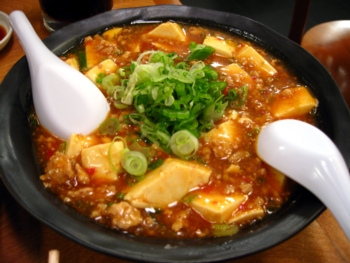
1 c Beef broth
1 tb Cornstarch
2 tb Water
1 t Brown sugar
2 tb Oil
1/2 lb Lean ground beef
1 cl Garlic minced
2 c Shredded Chinese cabbage
1/2 lb Tofu, cut into 1/2" cubes
3 c Hot cooked rice
2 Green onions with tops, sliced
Directions:
1. Bring broth to a boiling medium sauce pan. Combine
cornstarch and water in a small bowl, set aside.
2. Heat oil in wok over high heat. Add beef. Stir fry until
no longer pink, breaking larger pieces with a wooden spoon.
3. Add garlic and Chinese cabbage, cook about 1 minute.
4. Reduce heat and add broth mixture, stir until thickened.
5. Add tofu, gently stir until heated, about 1 minute.
6. Spoon tofu mixture over rice and garnish with green onions.
Mini Spring Roll
(Made with mini spring roll wrappers)
Yield: 20 Spring Rolls
Ingredients: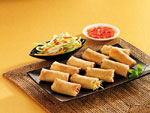
2 tablespoons vegetable oil
2 cloves garlic, finely chopped
2 teaspoons peeled and grated fresh ginger
3 1/2 oz (100 g) ground (minced) pork
3 1/2 oz (100 g) ground (minced) chicken
2 oz (60 g) ground (minced) shrimp
2 stalks celery, finely chopped
1 small carrot, finely chopped
6 canned water chestnuts, drained and finely chopped
4 scallions (shallots), finely chopped
1 cup (3 oz/90 g) shredded Chinese cabbage
2 teaspoons cornstarch (cornflour)
2 tablespoons oyster sauce
1 tablespoon soy sauce
2 tablespoons chicken stock
1 teaspoon Asian sesame oil
20 frozen mini spring roll wrappers, about 4 1/2 inches
(11.5 cm) square, thawed
2 teaspoons cornstarch (cornflour) mixed with 2 tablespoons
water
4 cups (32 fl oz/1 L) vegetable oil for deep-frying
Directions:
Mix together the cornstarch, oyster sauce, soy sauce, and
chicken stock. Set aside.
Heat wok and add 1 tablespoon oil, swirling down the sides
of the wok. When oil is ready, add garlic and ginger,
stir-frying until fragrant (approximately 1 minute). Add
the ground pork, chicken, and shrimp. Stir-fry until they
change color (approximately 3 minutes). Remove the
ingredients from the wok and set aside.
Add 1 tablespoon of oil to the wok. When hot, add, in the
following order, the celery, carrot, water chestnuts,
scallions, and cabbage. On high heat, stir-fry the
vegetables until they have softened (approximately
2 minutes). Add the cornstarch/oyster sauce mixture. Bring
the ingredients to boiling, and then reduce the heat to
medium and continue cooking to allow the sauce to thicken
(between 1 and 2 minutes). Remove the wok from the heat.
When the ingredients have cooled add the pork mixture,
stirring it in to mix well. Add the sesame oil.
Wrappers: Mix together the cornstarch and water. Carefully
wet the edges of the spring roll wrapper with the
cornstarch/water mixture. Mound 1 tablespoon of filling in
the center. Roll the wrapper up diagonally, folding in the
sides. Repeat until all the spring rolls are made.
Heat the 4 cups of oil in a wok, using a deep-frying
thermometer to determine when the temperature reaches 375
degrees F (190 degrees Celsius). (If you don't have a
deep-fry thermometer, just stick a bread cube in the oil -
when it sizzles and turns a golden color, the oil is hot
enough). Cook each spring roll until it turns golden brown,
in batches of 4 at a time. Remove and drain on paper towels.
Serve hot.
Spicy Chicken Wing
Ingredients: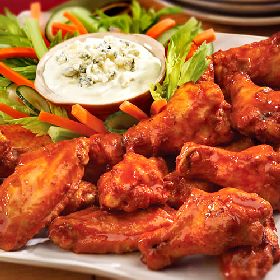
1 kg chicken wings (mid-joint)
5 tablespoon salt
Freshly Ground Black Pepper
Directions:
Clean wings and marinate with 3 tablespoon salt, the longer the
better (the wings can be prepared in advance and frozen).
Line the wings on a baking tray, and sprinkle with remaining
2 TB salt and freshly ground black pepper. Bake at 230
Celsius (roughly 450 Fahrenheit) for 20 minutes or until
golden, turning once. Serve with dipping sauce.
Dipping Sauce: Mix ketchup with a bit of honey and tabasco
sauce.
Egg Bubble Soup
Ingredients:
4 (250 g) eggs, beaten
1/8 tsp pepper
3 1/2 oz (100 g) lard or vegetable oil
1 tsp scallions, chopped
1 1/2 tsp salt, or to taste
1 tsp MSG
Directions:
Heat the oil in a work over low heat to about 350oF (175oC),
or until a piece of scallion green sizzles and moves around
when dropped in the oil.
Add the eggs and fry until the egg solution bubbles but has
not yet begun to brown. Add 4 cups (1 liter) of water. Stir
in the salt, MSG, and pepper. Simmer until fragrant. Pour
the soup into a tureen, sprinkle with scallions, and serve.
Health Article: I love Chinese food. But is it a healthy choice?
Chinese food is not only full of delicious flavors, it 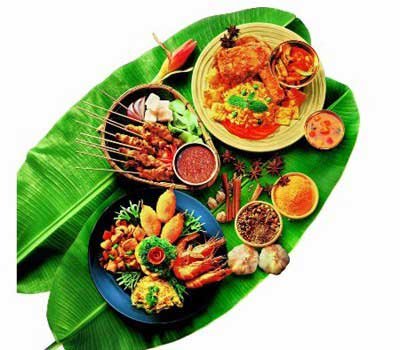 can be a healthy option too. If you're eating in a Chinese restaurant, buying from a takeaway, or cooking at home, remember to go for lower-fat options. can be a healthy option too. If you're eating in a Chinese restaurant, buying from a takeaway, or cooking at home, remember to go for lower-fat options.
You could choose dishes such as steamed fish, chicken chop
suey and Szechwan prawns. Lower-fat options include anything boiled or steamed, such as steamed fish and plain rather than fried rice. And for a healthy choice, it's best to
avoid anything in batter because these foods are high in fat.
Steaming rather than deep-fat frying really cuts down on fat.
Traditionally, Chinese food was cooked in small bamboo
steamers, but it's easy to steam food if you're cooking at
home. If you haven't got a steamer, try putting the food in
a sieve over a pan of boiling water. The great thing about
steaming is that you don't need to add any fat, and steamed vegetables keep their natural flavor and nutrients.
Stir-frying, another traditional Chinese cooking method,
can also be a healthy way to cook. Ideally you should use a
wok, but any large pan will do. You only need to use a very
small amount of oil and the food cooks quickly. This means
the food is low in added fat and it retains more nutrients
because the cooking time is shorter. So, if you're cooking
up your own stir-fry, you'll end up with a meal that's tasty,
nutritious, ready quickly, and you'll only have one pan to
wash!
Stir-fries typically contain a good selection of vegetables
and a moderate amount of lean meat or other protein, and
they're usually served with a large portion of rice or
noodles ¨C which is a great combination for a healthy diet.
A healthy balanced meal should be based around starchy foods,
so for a Chinese meal choose foods such as rice, noodles,
dumplings, plain and vegetable buns, and go for wholemeal or
wholegrain versions whenever possible. These foods are
filling, but they're not fattening unless they're cooked
with oil or you add fatty spreads and sauces to them. So
choose boiled or steamed versions instead of frying if
possible.
We should be eating lots of fruit and vegetables. The aim
is to have at least five portions of a variety of fruit and
vegetables each day. So choose from the following Chinese
delights: bamboo shoots, bean sprouts, Chinese cabbage/greens such as pak choi, water chestnuts, baby corn, exotic varieties of mushrooms and onions, aubergine, lychees, mandarins, melon, starfruit, and the list goes on.
We need to eat moderate amounts of protein such as duck,
chicken, squid, prawns, bean curd (tofu), eggs and nuts.
For a healthy choice, go for the lower-fat versions whenever
possible. Choose lean meat, trim off any excess fat and
skim the fat off the top of meat soups.
We should also have moderate amounts of milk and dairy foods, but these foods don't feature heavily in traditional Chinese cuisine, so you could choose fortified soya or rice milk, fish where you eat the bones, green leafy vegetables and tofu as alternative sources of calcium.
Only eat foods containing fat and/or sugar sparingly. So,
when you're cooking, use as little oil as possible. Instead
of sugary desserts or snacks try porridge, noodles, steamed
dumplings and fruit. Drink milk, water, herbal teas and fruit
juice instead of sugary drinks. And why not try a pot of
jasmine tea after your meal and some lychees for dessert?
Chinese seasonings and sauces make food tasty but they're
high in salt, so only use these in moderation: Hoisin (barbecue) sauce
Plum sauce
Black/yellow bean sauces
Soy/oyster/fish sauces You could try these flavorings instead: pepper, ginger,
garlic, 5-spice powder (star anise, fennel, clove, cinnamon,
peppercorns).
Also, you may have heard that some soy sauces contain
unhealthy processing chemicals. But levels of these
chemicals (called 3-MCPD) are coming down. In fact, when the Agency checked samples of soy sauce in 2001 nearly a quarter had higher than acceptable levels, but only 6% did in 2002. This is because more and more companies have recognized the problem and are working to avoid it. Even at these higher levels, you would need to have a lot of soy sauce with higher than acceptable levels of these chemicals, and eat it regularly for many years for there to be a health risk from the chemicals.
(Originally featured in Food Standards Agency.) Cooking Tips: Cooking Methods in Chinese Cuisine
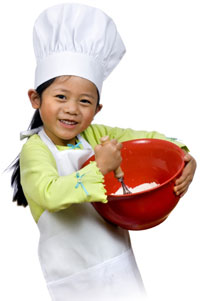
You may get confused by terms such as sautéing, marinades, stir-fry and deep-fry for you just start learning Chinese cooking. In fact they are all cooking methods in Chinese cuisine. In this tip, you are going to be familiar with the following 8 basic cooking methods. In the following tips, we will talk more about stir-fry and deep-fry. 1. Frying
2. Sautéing
3. Steaming
4. Flavor-potting
5. Smoking
6. Marinades
7. Sugar and Syrup Coating
8. Sauces and Gravies Today we will talk about frying, sautéing, braising, stewing, boiling and simmering.
1. Frying
Chinese cooking uses many methods of frying, including
several types of deep-frying, "slippery-frying,"
"quick-frying," and several types of stir-frying.
1.1. Deep-frying (zha)
In deep-frying(zha), ingredients are fried in four to six
cups of vegetable or peanut oil over a high heat.
1.2. Dry deep-frying (gan zha)
In dry deep-frying (gan zha), foods are given a thick coating
of cornstarch (corn-flour) before being fried. They come
out very crisp outside and tender inside.
1.3. Clear deep-frying (qing zha)
In clear deep-frying(qing zha), the foods are not coated
with cornstarch before being cooked.
1.4. Flaky deep-frying (su zha)
In flaky deep-frying(su zha), foods are parboiled or
steamed until they are almost cooked through. Then they are
dipped in a thick batter of cornstarch and water and cooked
in boiling oil until the coating turns crisp and flaky.
1.5. Soft deep-frying (ruan zha)
In soft deep-frying (ruan zha), the ingredients are not
precooked, but are given a light coating of cornstarch
before being fried. They come out tender but not crisp.
Chinese cooking also uses two techniques for deep-frying
ingredients in wrappers.
1.6. Paper-wrapped deep-frying (zhibao zha)
In paper-wrapped deep-frying (zhibao zha), the food is
wrapped in sheets made of glutinous rice flour.
1.7. Crisp deep-frying (cui zha)
In crisp deep-frying (cui zha), the wrappers are made of
dry bean-curd sheets.
Both methods involve first deep-frying the packets of food
in moderately warm oil over a high heat and crisping them
by frying them briefly when the oil comes to a boil.
1.8. Slippery-frying (liu)
Slippery-frying (liu) involves two processes. The
ingredients are deep-fried and then covered with a
cornstarch-based sauce prepared in a separate pot during the frying or immediately afterward. When the sauce is poured over the food, it results in a texture as slippery as satin. Foods prepared this way are fragrant, crisp, and tender.
1.9. Deep-frying before stir-frying (peng)
In deep-frying before stir-frying (peng), foods are
deep-fried in very hot oil until cooked. Then the excess
oil is poured out and a sauce which unlike slippery-frying
does not contain cornstarch is added. The dish is stir-fried
for a few moments to blend the ingredients before being
served. Dishes prepared this way are crisp outside and tender
inside , with each morsel covered in a velvety sauce.
1.10. Quick-frying (bao)
In quick-frying (bao), foods are deep-fried in very hot oil
over high heat and then the oil is poured out and seasonings
are added to the food, which is left in the wok.
Chinese cooking distinguishes four types of stir-frying (chao).
In all four types, ingredients are cut into small cubes,
strips, shreds, or slices, and cooked over high heat in a
few tablespoons of very hot oil in a wok. The technique of
stir-frying involves using a flat scoop to toss and turn
the ingredients so they cook evenly in the oil. Sometimes
the wok is also shaken. Stir-frying usually takes only a few
minutes. The food must be removed as soon as it is cooked to guarantee its fresh flavor and crunchy-tender texture.
1.11. Raw stir-frying (sheng chao or bian)
In raw stir-frying (sheng chao or bian), raw ingredients
are quickly stir-fried, resulting in a fresh, tender dish
with little sauce.
1.12. Stir-frying pre-cooked food (shu chao)
In stir-frying pre-cooked food (shu chao), the ingredients
are parboiled or precooked before being stir-fried.
1.13. Soft stir-frying (ruan chao)
In soft stir-frying (ruan chao), the food to be stir-fried
is coated with a batter before being cooked.
There is also stir-frying without coating (gan chao).
2. Sautéing
Chinese cooking uses three methods of sautéing, which is
also called "shallow-cooking." Sautéing uses much less oil
than deep-frying and is done at lower temperatures than
stir-frying. Ingredients are usually cut into slices or
flat pieces. Seasonings are added after the food is browned.
2.1. Sautéing on both sides (jian)
In sautéing on both sides (jian), foods are browned slowly
on both sides in oil but do not have a coating.
2.2. Sautéing on one side (tie)
Sautéing on one side (tie) means browning batter-coated
foods on one side only.
2.3. Sautéing followed by cooking in sauce (ta)
In sautéing followed by cooking in sauce (ta), foods are
coated in a batter and sautéed on both sides. Then a sauce
is added and the dish is simmered until the sauce thickens.
The food will be soft inside, but with some crispness
outside, and the thickened sauce will be slippery.
3. Braising, Stewing, Boiling and Simmering
Chinese cooking has many methods of cooking foods in liquids.
3.1. Stewing one kind of meat (ao)
Stewing one kind of meat (ao) means slow-cooking chunks,
slices, cubes, or shreds of meat after first stir-frying
them briefly until the surfaces have lost their raw look
but before the insides are cooked. Seasonings and broth are
added and the liquid is brought to a boil. Then the heat is
turned down and the meat simmers slowly until done. The
sauce is not thickened.
3.2. Precooking before stewing (hui)
In precooking before stewing (hui), several ingredients are
parboiled or precooked before being placed in one pot for
slow simmering. Unlike ao, the final step involves
thickening the sauce.
3.3. Stewing over low heat (men)
Stewing over low heat (men) resembles braising. The meat is
stir-fried briefly to brown. Then seasonings and a sauce are
added and the dish simmers over low heat until the sauce is
almost all reduced.
3.4. Stewing over medium, then high, heat (shoo)
Stewing over medium, then high, heat (shoo) means braising
foods over medium heat until tender, then turning the heat
to high to reduce the sauce.
Both of the above methods can be applied to "red-cooking,"
or braising in soy sauce. The soy sauce imparts the reddish
look that gives this technique its name.
3.5. Stewing meats with bones (ju)
Stewing meats with bones (ju) is similar to the above
methods, but the meat or poultry is first marinated in
rice-wine and soy sauce. Then it is deep-fried before being
simmered in sauce and water. The meat is not boned.
3.6. Stewing and adding thickening (pa)
Stewing and adding thickening (pa) is similar to stewing
meats with bones, but the sauce is thickened with cornstarch
instead of being reduced and thickened by simmering.
In quick-boiling in broth (cuan), thinly-sliced ingredients
are cooked quickly in a boiling clear broth, or in water.
3.7. Dip-boiling (shuan)
In dip-boiling (shuan), as with the "hot pot" dishes
referred to earlier, diners pick up morsels of meat, seafood
and vegetables and cook them by dipping them into boiling
water or stock in a fire-pot.
3.8. Boiling (zhu)
Boiling (zhu) simply refers to cooking ingredients in a
large amount of water over high heat. The sauce is reduced
and the food comes out tender. No cornstarch is used. The
gravy or sauce is rich but light and fresh.
3.9. Simmering (one of several forms of dun)
In simmering (one of several forms of dun), foods are put
into cold water and brought to boil. Then seasonings are
added and the heat is reduced for long, slow cooking.
3.10. Simmering over high heat (wei)
Simmering over high heat (wei) also starts with cold water,
as in dun, but the food is cooked at high heat over a long
period. This method tenderizes tougher meats and poultry
and yields a thick, heavy sauce.
3.11. Simmering over charcoal (wo)
In simmering over charcoal (wo), the food is cooked over
very low heat from a charcoal burner for three or four
hours. This gives it a delicate flavor and a soft, tender
texture.
That's all for today. Maybe I put too much info in this
newsletter. But you can always save it and try it later.
Cookingrecipes, please tell your friends about us. They will thank you :-)
Just click this link to send them an email:
http://www.chinesefooddiy.com/recommend.htm
or forward this email to them. Thank you!
All the best,
Happy cooking!

Nicholas Zhou - Author
Real and Healthy Chinese Cooking 
http://www.chinesefooddiy.com |